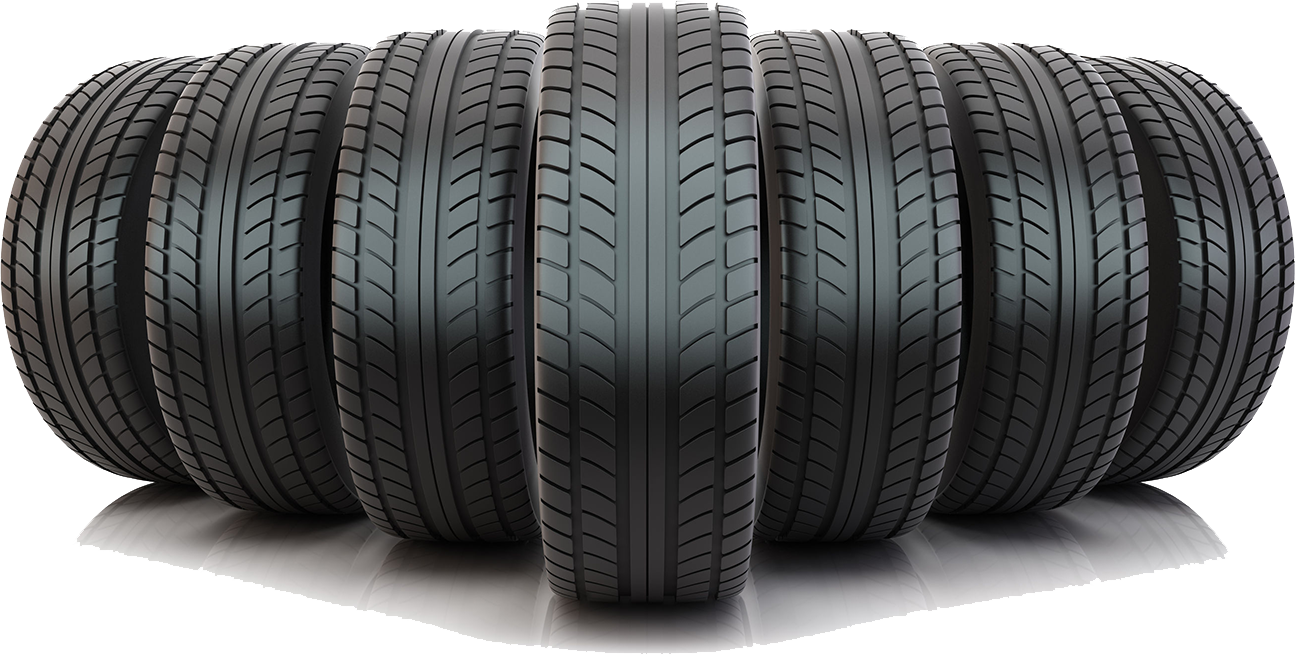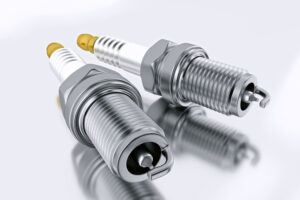Picture yourself on a long road trip. The hum of the engine, the smooth roll of the tyres on the asphalt, the effortless grip as you turn corners—all these elements work together to make your journey comfortable and safe. But have you ever stopped to think about the unsung hero beneath your car? The tyres. They are the only point of contact between your vehicle and the road, yet they rarely get the credit they deserve. Without them, cars would be nothing more than heavy metal contraptions struggling to move efficiently. In fact, the invention of the tyre is as crucial to automobiles as the engine itself.
The road to modern tyres has been long and filled with innovation. From primitive wooden wheels to air-filled rubber tyres, from the stiff bias-ply design to the high-tech radial tyres we use today, every step in tyre development has shaped the way we drive. This is the story of how tyres evolved from simple rolling aids to one of the most essential components of modern transportation.
The Wheel: The First Step Towards Tyres
Long before tyres, humans relied on brute force and simple tools to transport goods. Early civilizations moved heavy objects using logs as rollers, a crude but effective method. Then, around 3500 BCE, the wheel was invented in Mesopotamia. This single invention revolutionized transportation, agriculture, and machinery.

At first, wheels were solid wooden discs, carved and fixed onto carts. They were durable but had little shock absorption, making travel rough and uncomfortable. Over time, wheels evolved. By 2000 BCE, Egyptians and Greeks began reinforcing wooden wheels with leather or metal, improving durability. The spoked wheel was later introduced, making wheels lighter and more efficient.
However, a crucial problem remained—wheels lacked grip and cushioning. This issue led to the eventual invention of tyres.
The First Tyres: A Simple but Important Innovation
The first “tyres” weren’t made of rubber but of solid materials like leather, iron, or even wood. Blacksmiths would heat iron rings and fit them around wooden wheels to provide durability. These early tyres were tough but unforgiving, making rides bumpy and uncomfortable.
The real breakthrough came in 1839, when Charles Goodyear discovered vulcanization, a process that made rubber stronger and more flexible. This discovery laid the foundation for modern rubber tyres. However, early rubber tyres were still solid, meaning they lacked air and didn’t provide much cushioning.

Then, in 1845, Scottish engineer Robert William Thomson developed the first air-filled (pneumatic) tyre, but it didn’t gain much attention. It wasn’t until 1888, when John Boyd Dunlop reinvented the pneumatic tyre for bicycles, that the idea took off. Soon, these air-filled tyres found their way onto early automobiles, transforming the driving experience.
The Rise of Modern Tyres (1900s)
By the late 19th century, automobiles were becoming more common, and the demand for better tyres grew. Here’s how tyres rapidly evolved in the early 20th century:
1. Pneumatic Tyres for Cars (1890s)
Early cars adopted pneumatic tyres, which significantly improved ride comfort and handling. With air cushioning the impact of the road, drivers and passengers experienced smoother rides.
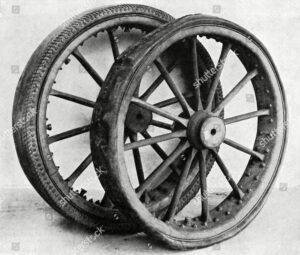
2. The First Treaded Tyre (1904)
Before 1904, tyres had smooth surfaces, meaning they didn’t grip the road well, especially in wet conditions. That year, Continental introduced the first patterned tread tyre, providing better traction and reducing skidding.
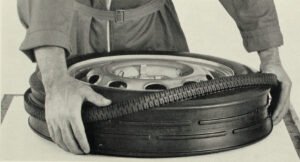
3. The Boom of Mass Production (1913)
As automobiles became more affordable, thanks to Henry Ford’s assembly line and the Model T, the demand for reliable tyres skyrocketed. Manufacturers needed to produce tyres faster and more efficiently to keep up with the booming industry.

4. Synthetic Rubber (1931)
Natural rubber was expensive and limited, so in 1931, DuPont developed synthetic rubber. This breakthrough allowed for mass production, making tyres cheaper and more consistent in quality.
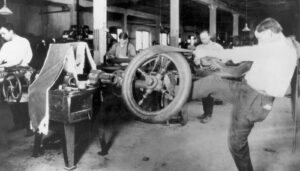
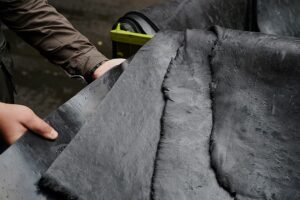
5. The Radial Revolution (1946)
The biggest game-changer came in 1946, when Michelin introduced the radial tyre. Unlike previous designs, which had crisscrossing layers (bias-ply), radial tyres had plies running straight across, making them:
- More durable (longer lifespan)
- More fuel-efficient (lower rolling resistance)
- Better at gripping the road
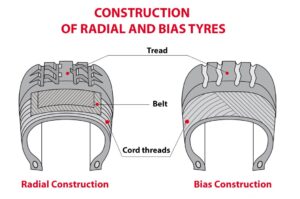
Radial tyres quickly became the global standard, and today, nearly all vehicles use them.
The Functions of Tyres: More Than Just Rubber Rings
Tyres are the unsung heroes of every journey, silently working to keep you safe, comfortable, and in control. They do far more than just keep a car rolling—they are essential to performance, handling, and efficiency. Here’s a deeper look at how tyres impact your driving experience:
1. Supporting the Vehicle’s Load
Think of tyres as the foundation of your car. They bear the entire weight of the vehicle, including passengers, cargo, and even the force of movement. Properly designed tyres distribute this weight evenly, preventing uneven wear and ensuring a stable, balanced ride.
2. Providing Traction and Grip
Imagine trying to walk on ice with smooth-soled shoes—slippery and unstable, right? That’s exactly how a car would behave without proper tyre tread. Tyres are designed with unique tread patterns that grip the road surface, allowing the car to:
✔ Accelerate efficiently without slipping
✔ Brake safely without skidding
✔ Maintain control during turns and sudden maneuvers
In wet or icy conditions, special tread grooves help push water away, reducing the risk of hydroplaning (losing grip on a wet surface).
3. Absorbing Shocks for a Smoother Ride
Roads aren’t always smooth—bumps, potholes, and uneven terrain can make for a rough ride. Tyres act as a cushion, absorbing shock and vibration before they reach the vehicle’s suspension system. This not only makes the ride more comfortable for passengers but also protects the car’s components from excessive wear and tear.
4. Facilitating Steering and Control
Have you ever tried turning a bicycle with flat tyres? It’s sluggish and unresponsive. The same principle applies to cars—tyres directly affect how well a vehicle responds to steering input.
Good tyres enhance maneuverability by:
✔ Maintaining contact with the road during sharp turns
✔ Providing stability at high speeds
✔ Preventing excessive body roll (tilting of the car during turns)
Worn-out or poorly maintained tyres reduce steering precision, making the car harder to control, especially in emergency situations.
5. Enhancing Fuel Efficiency
Did you know that tyres can affect your fuel consumption? When tyres roll, they create resistance against the road—this is called rolling resistance. The higher the resistance, the more effort (and fuel) the engine needs to keep the car moving.
✔ Low rolling resistance tyres reduce friction, helping the car move more efficiently and saving fuel.
✔ Old or worn-out tyres increase resistance, forcing the engine to work harder and burn more fuel.
By choosing fuel-efficient tyre designs and replacing worn-out tyres when necessary, drivers can improve mileage and reduce carbon emissions.
6. Supporting Braking Performance
Brakes stop the wheels, but tyres stop the car. The effectiveness of your braking system heavily depends on tyre condition.
✔ A well-maintained tyre with good tread grips the road, allowing the car to stop quickly and safely.
✔ A worn-out or bald tyre has reduced traction, increasing stopping distances and making sudden braking dangerous.
For example, in wet conditions, a tyre with worn-out tread won’t be able to channel water away, leading to skidding or hydroplaning when you hit the brakes.
7. Ensuring Stability and Handling
Tyres are crucial in keeping a car stable, especially at high speeds or in challenging driving conditions. Properly chosen and well-maintained tyres help maintain balance, preventing issues like:
✔ Excessive body roll during turns
✔ Swerving or pulling to one side
✔ Loss of control on wet, icy, or uneven roads
Vehicles equipped with the right tyres for specific driving conditions (e.g., winter tyres for snow, performance tyres for sports cars) have significantly better stability and safety.
The Bottom Line: Tyres Matter More Than You Think
Every time you drive, your tyres are the only part of the car making direct contact with the road. Whether it’s supporting the weight of your car, gripping the road for safety, or saving you money on fuel, tyres play a vital role in how well your vehicle performs.
Ignoring tyre maintenance can lead to poor handling, increased fuel costs, and even dangerous situations like blowouts or skidding. So, the next time you check your car, give your tyres the attention they deserve—they’re working harder than you think!
The Future of Tyres: Where Are We Headed?
Tyre technology continues to evolve. Some of the latest innovations include:
Run-Flat Tyres – Allow cars to keep driving even after a puncture.
Smart Tyres – Embedded sensors monitor pressure, temperature, and wear in real-time.
Eco-Friendly Tyres – Made from sustainable materials to reduce environmental impact.
Airless Tyres – Solid, puncture-proof designs being tested for future vehicles.
As cars become smarter and more efficient, tyres will continue to play a key role in shaping the future of transportation.
Conclusion: The Tyre’s Silent Legacy
The tyre is more than just a piece of rubber—it is the bridge between a car and the road, the difference between a smooth ride and a rough one, the unsung hero of every journey. From ancient wooden wheels to today’s high-tech radials, tyres have transformed how we move, making travel safer, faster, and more efficient.
Next time you drive, take a moment to appreciate the engineering beneath you. Because without tyres, the world wouldn’t roll the way it does today.

